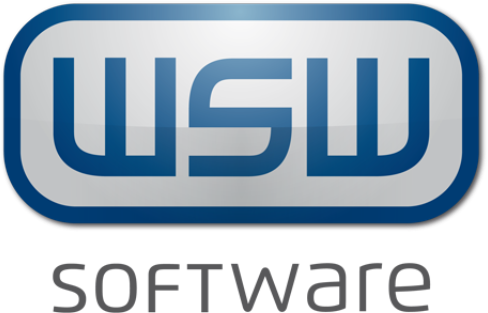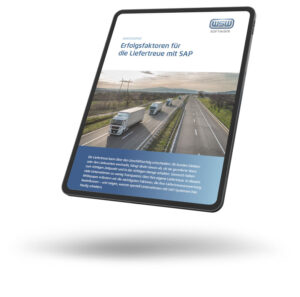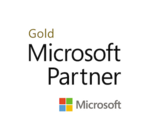ATLAS Release 3.0
This is what users of SAP GTS must bear in mind
The changeover to ATLAS Release AES 3.0 is imminent. The release change also affects users of software for electronic export processing such as SAP Global Trade Services (GTS). What do you need to consider?

The most important facts about the ATLAS Release AES 3.0 in brief
- Customs released 3.0 in March 2022.
- Software providers such as SAP must certify their software solution for the new release in this course. SAP, respectively Seeburger as provider of the transfer software, have completed this certification in September 2022.
- As a user, you must update your SAP GTS system (import patches or notes) and perform customizing manually. Plan for the entire project approximately 3 months so that you can be sure to be ready in time.
- At the latest by the end of the so-called soft migration, your system must be converted to the latest version.
We will gladly accompany you through the release change!
It can be assumed that the change to AES 3.0 will require major changes in your GTS. The adjustments published by Customs suggest that the scope of the functional and technical changes will, in total, require a considerable amount of time for users - a significant increase compared to past release upgrades.
We therefore recommend that you deal with the release change early!
Only with an early project start can you be sure that the changeover will run smoothly and be completed on time. We are happy to support you in planning and implementing the update. We accompany you during the integration, the organization of the test operation and also during training of your employees.
Which dates are important for the release change?
Customs' release schedule is as follows:
- In March 2022, transfer of ATLAS Release AES 3.0 to live operation
- SAP certifications for the ATLAS release until the end of September 2022
- Recommended deadline for project start in August 2023
- Final deadline for SAP GTS users: Soft migration completed by November 30, 2023
What does it mean?
The preparation and implementation for users means a larger project. Customizing has to be done manually, trial operation has to be applied for at customs and comprehensive tests have to be performed for all processes.
In detail, SAP has announced the following: Most of the notes are included in GTS 11.0 SP20 (planned release week 43/2022) or SAP GTS, edition for SAP HANA SP03, but a few are only included in GTS 11.0 SP21 or SAP GTS, edition for SAP HANA SP04. The so-called "delivery customizing" is only included in GTS 11.0 SP21, so it has to be done manually. In any case, the SAP Master Note 3227516 DE AES: Conversion from AES 2.4 to AES 3.0 is helpful for orientation. We recommend that you import SP21 as soon as it is available.
ATTENTION: The converter provider Seeburger recommends planning a TOTAL project duration of 17 weeks! Only then will all changes be productive, including the test operation and the conversions in SAP GTS. Whoever wants to have completed the conversion in time for the final date of the soft migration on November 30, 2023, must therefore have commissioned the project accordingly by August! Also consider vacation and vacation situations when planning.
Why does Seeburger assume 17 weeks? There are some changes coming up, which for example also affect the converter. For users who host a Seeburger converter in-house, it may even be necessary to set up a new server or database. Setting up the web service to be able to exchange messages with customs also takes time.
What happens if the deadline for the changeover is not met?
The message exchange with customs via your SAP GTS system is no longer possible on the key date if you do not complete the changeover in time. In this case, you would have to maintain your customs processing via the customs web services from this point on - manually. This will significantly increase the time required for your processes and the manual transfer may lead to more errors in your entries.
What do you have to consider as an SAP GTS user?
As a user of SAP GTS, you must observe the following steps if you want to import the necessary Support Packages:
If necessary, preliminary work such as archiving must be planned and carried out. Archiving ensures that you need as little time as possible for the import of the actual update.
You must apply to the customs administration for a test run for the new release.
The system must be finally converted.
You need to perform technical rework such as an SPAU adjustment.
The test operation must be performed.
The changeover date must be coordinated with the customs administration.
Training for users may need to be provided.
Attention: Also keep in mind that other conversions may be necessary in addition to the SAP GTS adjustments: EDIFACT converters are no longer permitted after the release. You must therefore make sure that your converter is XML-capable and, if necessary, exchange the converter.
Are you due for an upgrade of your systems anyway? If so, check in good time whether you want to install the upgrade at the same time as the release upgrade. You can efficiently perform the necessary integration and tests at the same time.
What does the ATLAS Release AES 3.0 contain?
The ATLAS release has some effects that also affect the participant interface. So these are the functional changes that users of software solutions for the digital handling of export processes must also take into account in their systems.
Customs gives some examples of such changes:
- Elimination of the export refund
- "Foreign trade exporter"
- Concept central customs clearance
- ZELOS: transmission of documents, preliminary documents, transport documents and statements
- Changed structure of the MRN: Master Reference Number instead of Movement Reference Number
- New messages "Rejection for export" and "Rejection at exit".
- Adaptation of all messages due to changed specifications of the UZK
- Modification of data wreaths, codings and code lists
- Final conversion to Unicode
- Final discontinuation of EDIFACT
FAQ
You can read the most important information about the origin of goods and preferences here:
AES is an IT-supported export procedure. The abbreviation stands for "Automated Export System".
ATLAS is the customs software of the German customs administration. The abbreviation is made up of the words "Automated Tariff and Local Customs Processing System". It is used for both internal transaction processing and the automation of customs clearance.
Customs published the update in March 2022. Software providers such as SAP subsequently had to have their systems certified. The soft migration, i.e. the conversion of participants' software, must be completed by July 2023.
GTS stands for Global Trade Services and is a software solution from SAP that offers comprehensive functionalities for the automated processing of customs and foreign trade.


